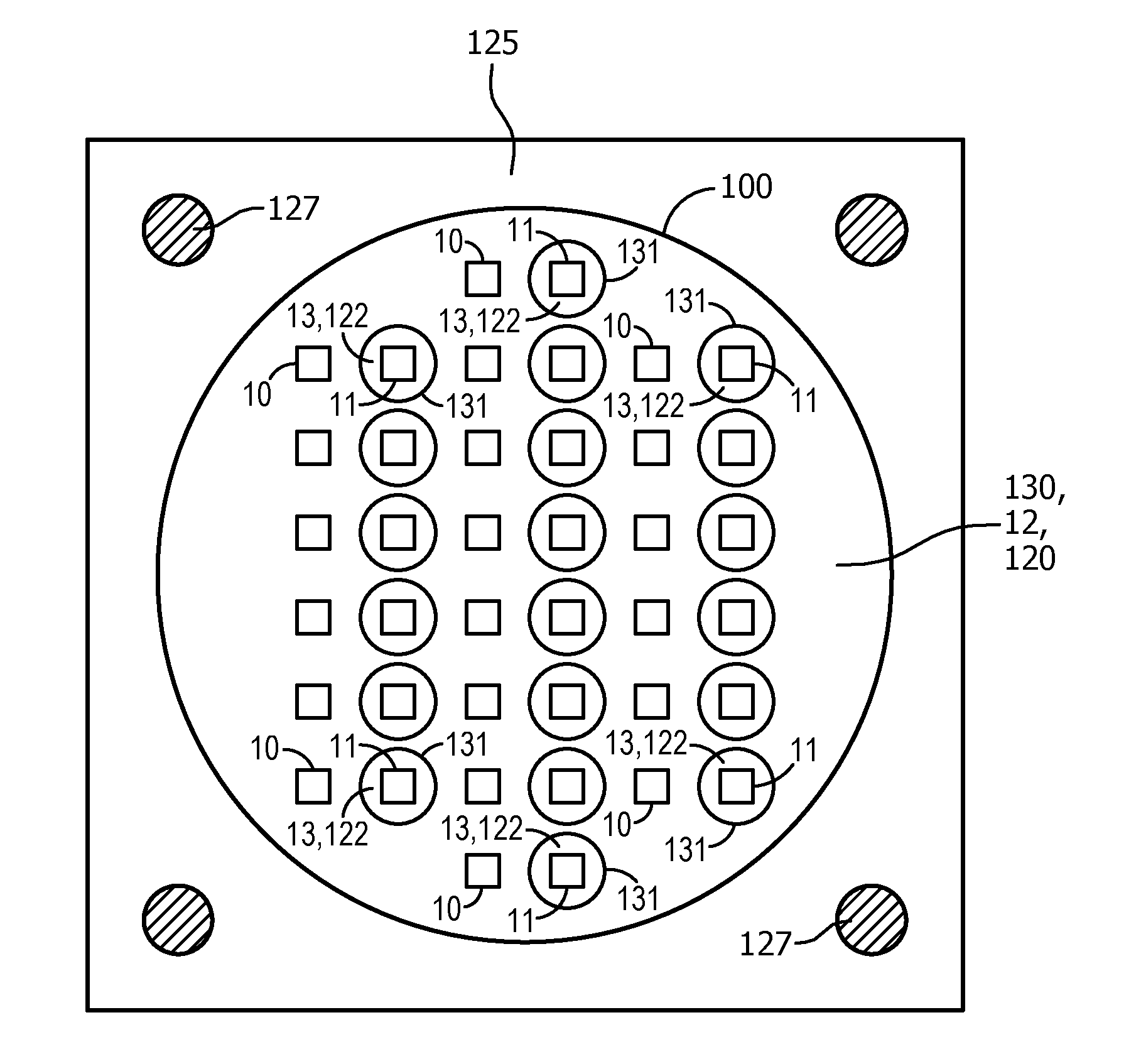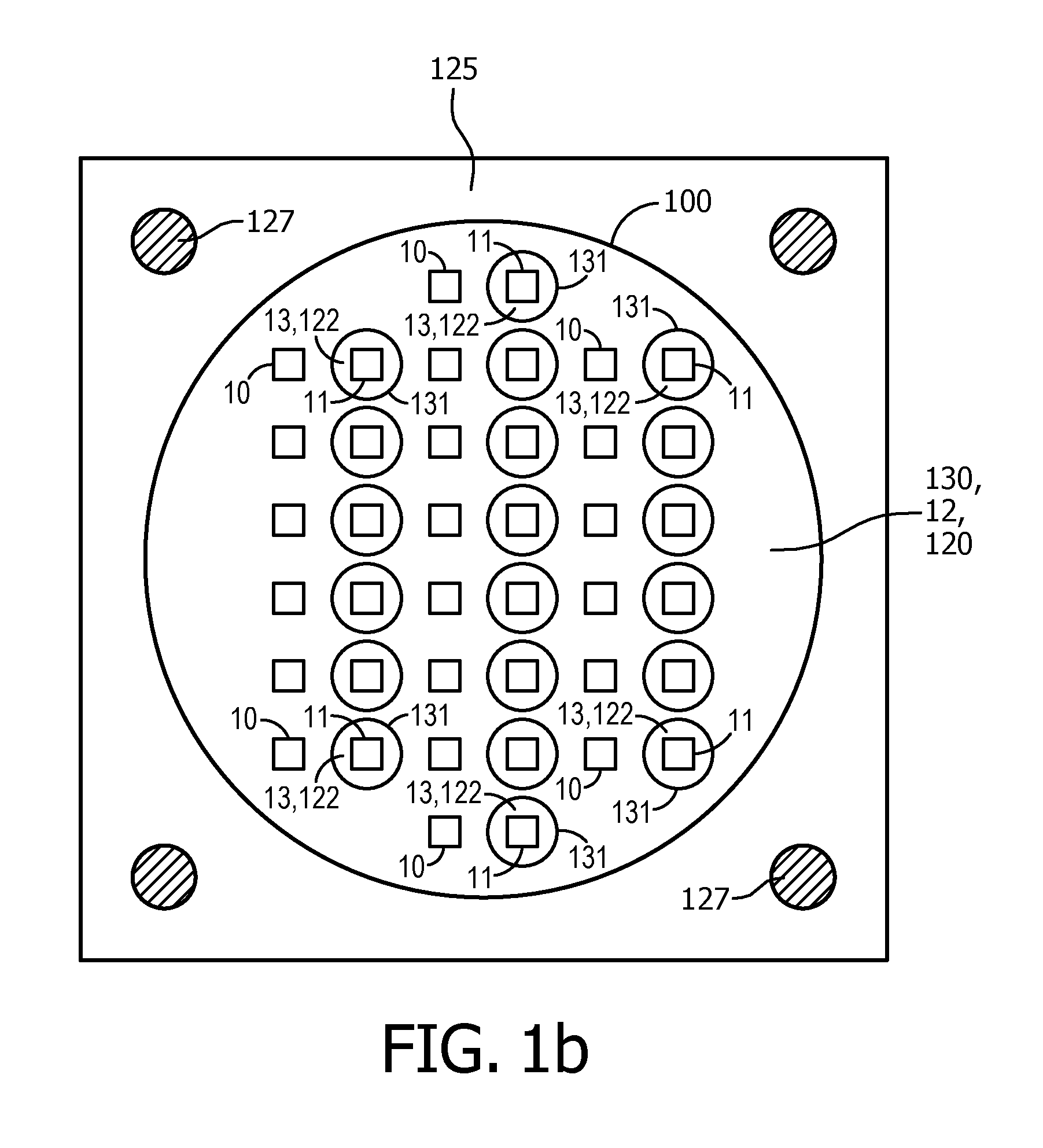Lighting device comprising at least two sets of LEDs
a technology of led light source and led light source, which is applied in the direction of semiconductor devices for light sources, light and heating apparatus, fixed installation, etc., can solve the problems of low cri (“color rendering index”) of the generated light, the light output of the amber led light source is relatively large, and the controller is required relative to complicated, etc., to achieve good color mixing
- Summary
- Abstract
- Description
- Claims
- Application Information
AI Technical Summary
Benefits of technology
Problems solved by technology
Method used
Image
Examples
Embodiment Construction
[0046]FIGS. 1a and 1b schematically depict a lighting device 100 comprising a first set of LEDs 10, a second set of LEDs 11, and first and second luminescent elements 12, 13. The first and second set of LEDs 10, 11 are mounted on a board 16. The first set of LEDs 10 is configured to generate blue light 14 (FIG. 1a) in the wavelength range 440 nm-490 nm during operation of the lighting device 100. The second set of LEDs is configured to generate blue light 15 (FIG. 1a) in the wavelength range 440 nm-490 nm during operation of the lighting device 100. In an alternative embodiment, the blue light 14 is in the wavelength range of 440-465 nm and the blue light 15 is in the wavelength range of 465 nm-490 nm. In another alternative embodiment of the lighting device, the first set of light emitting diodes is arranged to emit blue light in the wavelength range of 440 nm-465 nm, and wherein the second set of light emitting diodes is arranged to emit violet light in the wavelength range of 400...
PUM
 Login to View More
Login to View More Abstract
Description
Claims
Application Information
 Login to View More
Login to View More - R&D
- Intellectual Property
- Life Sciences
- Materials
- Tech Scout
- Unparalleled Data Quality
- Higher Quality Content
- 60% Fewer Hallucinations
Browse by: Latest US Patents, China's latest patents, Technical Efficacy Thesaurus, Application Domain, Technology Topic, Popular Technical Reports.
© 2025 PatSnap. All rights reserved.Legal|Privacy policy|Modern Slavery Act Transparency Statement|Sitemap|About US| Contact US: help@patsnap.com



